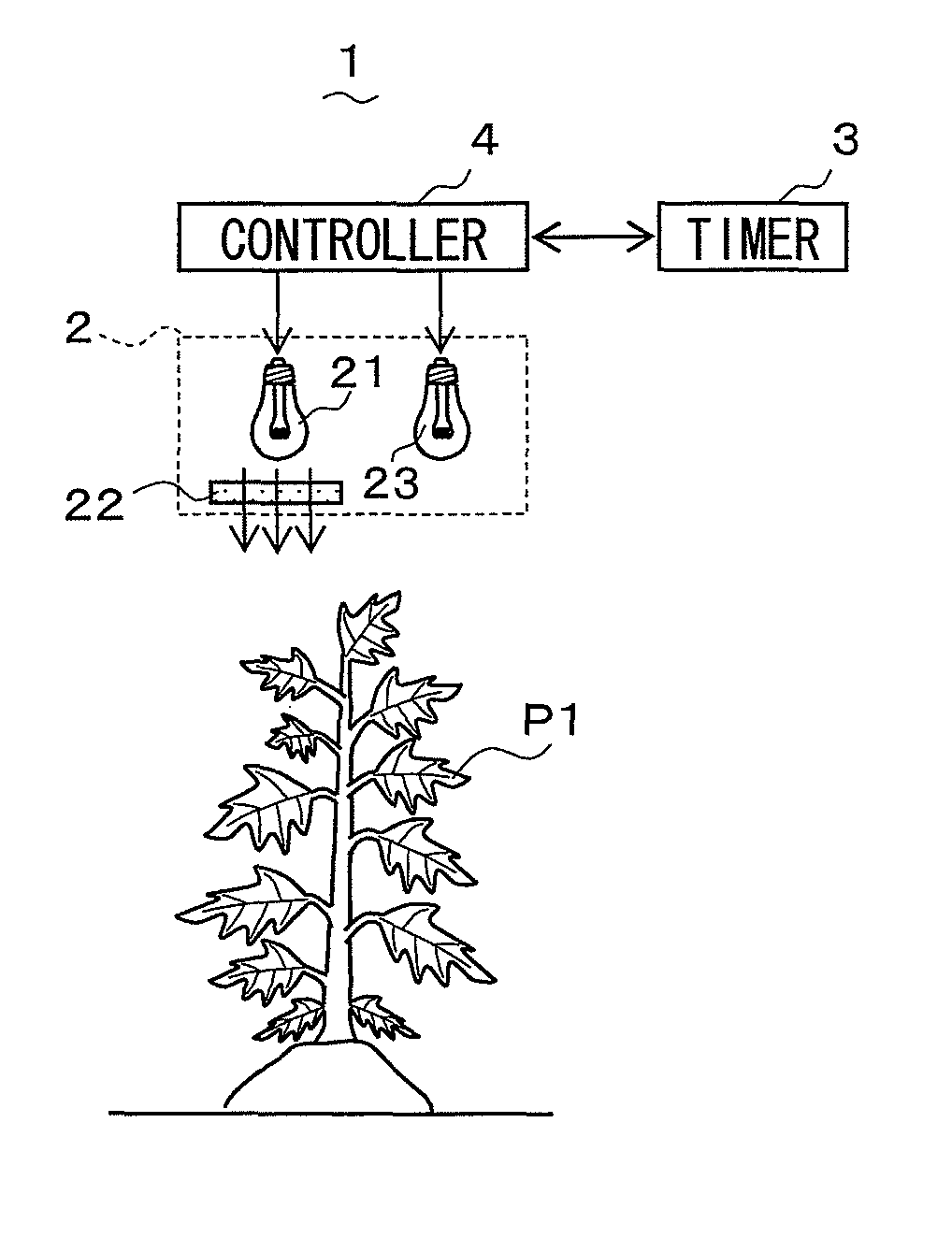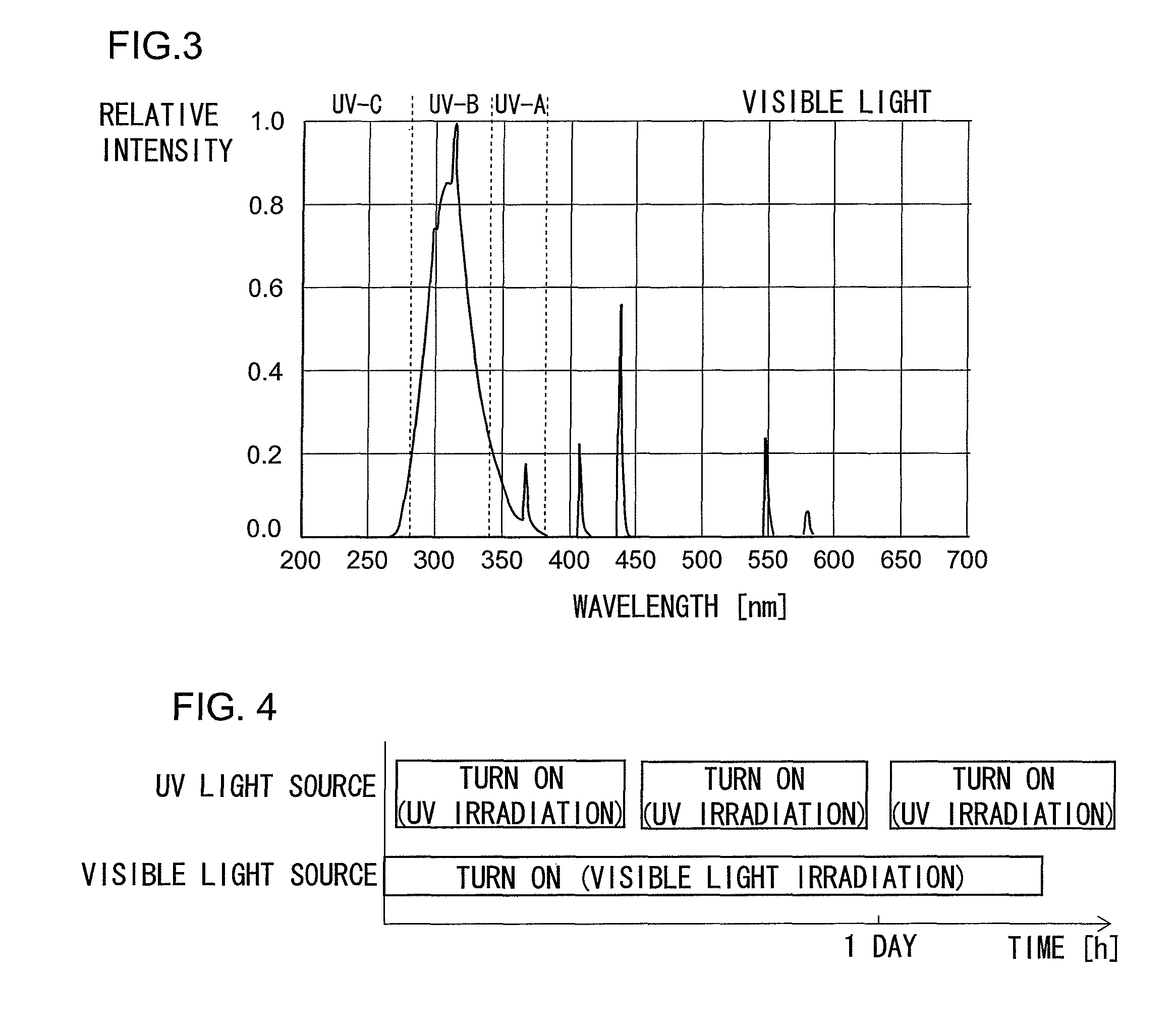Lighting apparatus for controlling plant disease
a technology of plant disease and light source, which is applied in the field of light source, can solve the problems of difficult to promote plant growth, reduce the generation of antibacterial substances or resistive substances, and cannot reliably inhibit the spore formation and hyphal growth of filamentous fungi, so as to reduce the spread of plant disease, crop yield increase, and the damage of a pest.
- Summary
- Abstract
- Description
- Claims
- Application Information
AI Technical Summary
Benefits of technology
Problems solved by technology
Method used
Image
Examples
Embodiment Construction
[0025]A lighting apparatus for controlling a plant disease (abbreviated as the lighting apparatus hereinafter) according to a preferred embodiment of the present invention is described with reference to FIGS. 1 to 4. The lighting apparatus, which is used in a fully-closed plant seedling production system, a protected cultivation using an agricultural plastic greenhouse, glass house, or the like, or an open culture, for example, irradiates a plant with ultraviolet rays and so on for controlling a plant disease.
[0026]FIG. 1 shows a configuration of a lighting apparatus according to the present preferred embodiment. A lighting apparatus 1 has a light source 2 which emits a light to a plant P1, a timer 3, and a controller 4 (control unit) which uses the timer 3 for time keeping and performs a light control of the light source 2. The light source 2 can switch between a superimposed light, in which ultraviolet rays and a light which reaches its peek in a wavelength range of visible light ...
PUM
 Login to View More
Login to View More Abstract
Description
Claims
Application Information
 Login to View More
Login to View More - R&D
- Intellectual Property
- Life Sciences
- Materials
- Tech Scout
- Unparalleled Data Quality
- Higher Quality Content
- 60% Fewer Hallucinations
Browse by: Latest US Patents, China's latest patents, Technical Efficacy Thesaurus, Application Domain, Technology Topic, Popular Technical Reports.
© 2025 PatSnap. All rights reserved.Legal|Privacy policy|Modern Slavery Act Transparency Statement|Sitemap|About US| Contact US: help@patsnap.com



